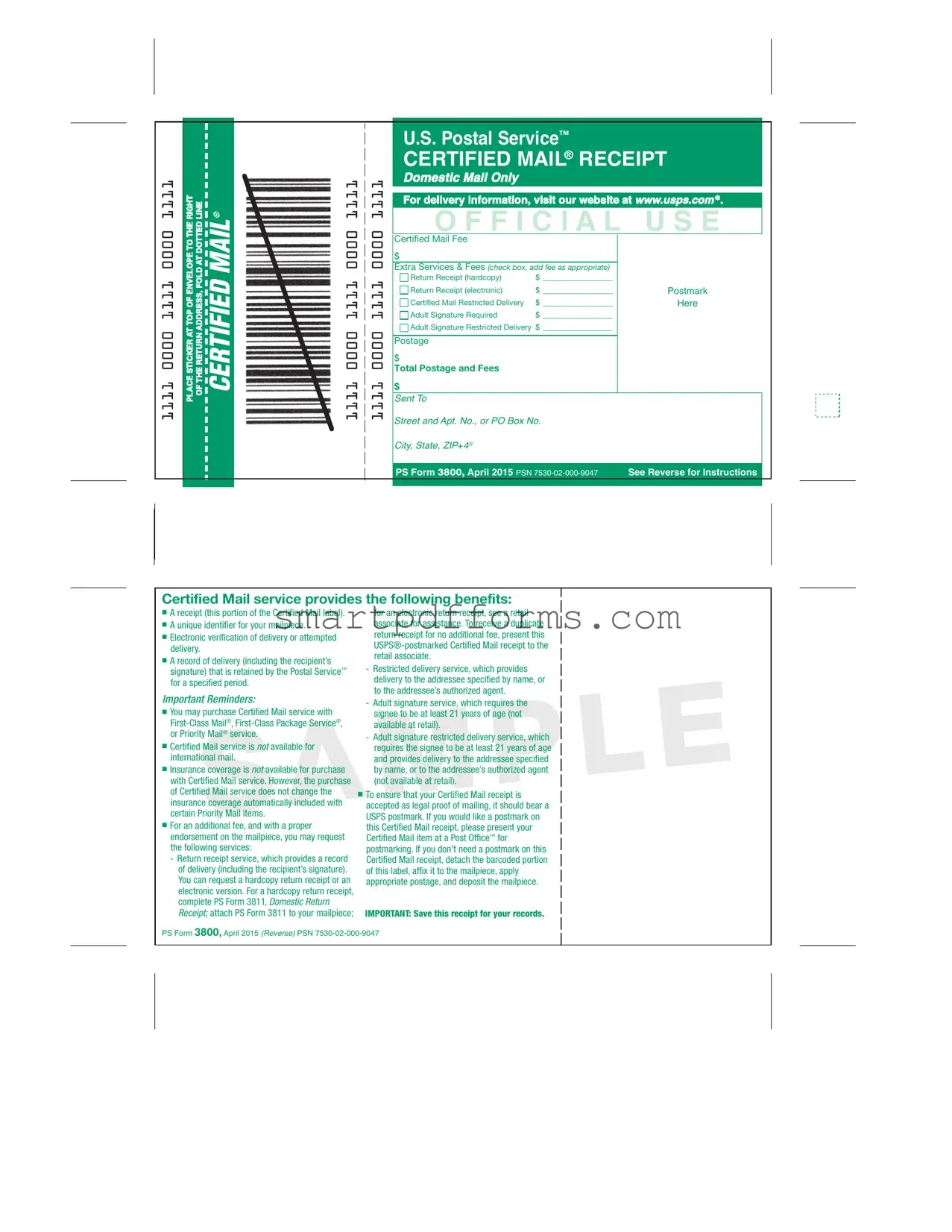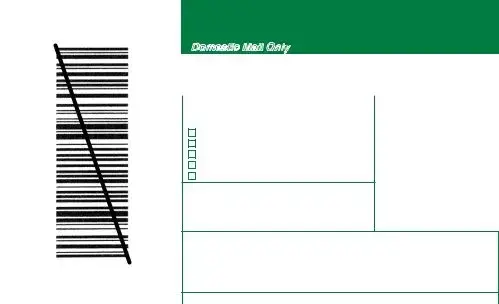The ability to send documents securely and with proof of delivery is vital in both personal and legal contexts, making the PS Form 3800, or the Certified Mail Receipt, an essential tool utilized by the U.S. Postal Service™. When sending mail domestically that requires verification of delivery, PS Form 3800 plays a crucial role by providing a receipt and a unique identifier for the mailpiece. This form allows for electronic verification of delivery or an attempt thereof, and retains a record of delivery, including the recipient's signature, for a specified period. It's important to note that Certified Mail service can be appended to First-Class Mail®, First-Class Package Service®, or Priority Mail® service, but cannot be used for international mail. Although insurance coverage is not available for purchase with Certified Mail service, the inclusion of Certified Mail does not alter the automatic insurance coverage provided with certain Priority Mail items. Among the additional services that can be requested for an extra fee are return receipt services—either hardcopy or electronic—and restricted delivery services, including those that require an adult signature. These endorsements ensure that the delivery is made to the specified addressee or their authorized agent and offer an extra layer of security for sensitive documents. Users are reminded to ensure their Certified Mail receipt is postmarked by presenting it at a Post Office™ if legal proof of mailing is needed, although for convenience, items can be mailed without a postmark by detaching and affixing the barcoded portion of the label. Saving the receipt is recommended for record-keeping purposes. The PS Form 3800, revised in April 2015, underscores the Postal Service's commitment to offering secure and verifiable mail delivery options.


